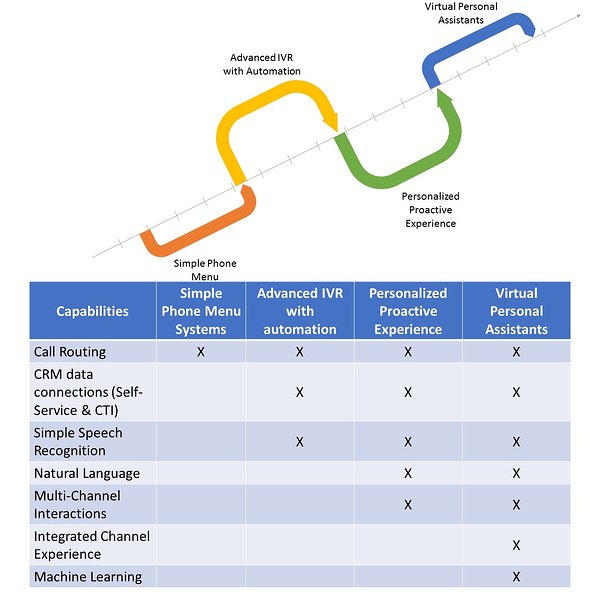Jul 24 2018 IVR Capabilities Through The Years: How Does Your System Stack Up?

Interactive Voice Response (IVR) systems have existed for several decades. Over time, this technology has evolved. The most advanced systems are at the vanguard of incorporating Artificial Intelligence into our everyday life. Despite the advancements in voice solutions, many companies have not updated their IVRs. Customer Service expectations are increasing. IVR modernization is a cost-effective way to keep up with demand.
For example, Healthcare is notorious for being 15 to 20 years behind the technology curve. This is particularly true with customer service technology. Patient experience and satisfaction has been thrust into the spotlight in recent years. Hospital Consumer Assessment of Healthcare Providers and Systems (HCAHPS) metrics are now affecting Medicare reimbursement. So how does an organization with a simple phone menu system adapt?
Start by assessing your current IVR capability. We have composed this simple maturity model to help organizations assess their voice customer service capability

Simple Phone Menu
These systems feature simple voice menu prompts with telephone keypad inputs (Dual-tone multi-frequency – DTMF). The primary goal of these systems is to route customer calls to the appropriate agent groups. Believe it or not, we still see a lot of this today. This system is effective when menu options are relatively simple, but often does not capitalize on the opportunity to automate.
Advanced IVR With Automation
The advent of Automated Speech Recognition (ASR) technology allows for more complex inputs to be taken in by IVR systems. In addition, IVR systems are often built with data hooks into back-end systems allowing IVRs to authenticate and perform common or simple customer service tasks. When calls need to be transferred to agents, computer telephony integration (CTI) allows for a screen pop. Agents can see the activity in the IVR and pick up the conversation without the need for customers to repeat information.
The net effect allows customers to use the voice channel to authenticate and perform self-service tasks of all types and complexity. Removal of low-value, redundant tasks free up agents to focus on more complex problems and better serve customers.
Personalized Proactive Experience
As integration and use of automation continues to evolve, an even more streamlined experience for customers has emerged. Better use of CRM data allows IVR systems to identify customers via their phone number review caller accounts to anticipate needs. Additional advancements in anticipating customer needs have led to IVR systems being able to proactively communicate through outbound calls. This capability has allowed for avoidance of potential calls into customer service and/or introduction of additional products and services that the customer may need at just the right moment.
The maturation of Simple Speech recognition to Natural Language Understanding (NLU) allows voice systems to have conversational interface for customers. This allows voice systems to move away from menu prompts to a “How may I help you” prompt. These experiences transform customer experiences by allowing customers to interact with organizations from their own perspective. This allows for better call routing toward self-service and/or reduction of costly internal transfers.
At the same time, IVR systems have expanded capabilities to interact with customers in different channels such as text messaging, email, chat, and social media applications like Facebook and Twitter.
Virtual Personal Assistants
When NLU is combined with advanced real-time analytics and Machine Learning (ML) capability, customers are able to have a highly-personalized and intuitive experience. Virtual Assistant applications are able to remind, alert and/or suggest actions to customers that will avoid averse situations or enhance the brand experience. The experience can be seamlessly intertwined with live agent interactions when needed.
The integration of channels allows customers to provide information and complete tasks in the channel that is most convenient for them. This includes starting an interaction in one channel like voice and entering information in real-time via text or email seamlessly without dropping any communication threads.
Virtual Personal Assistants allow organizations to fully deliver on the three core demands of customers: know me, engage me, and value my time.
